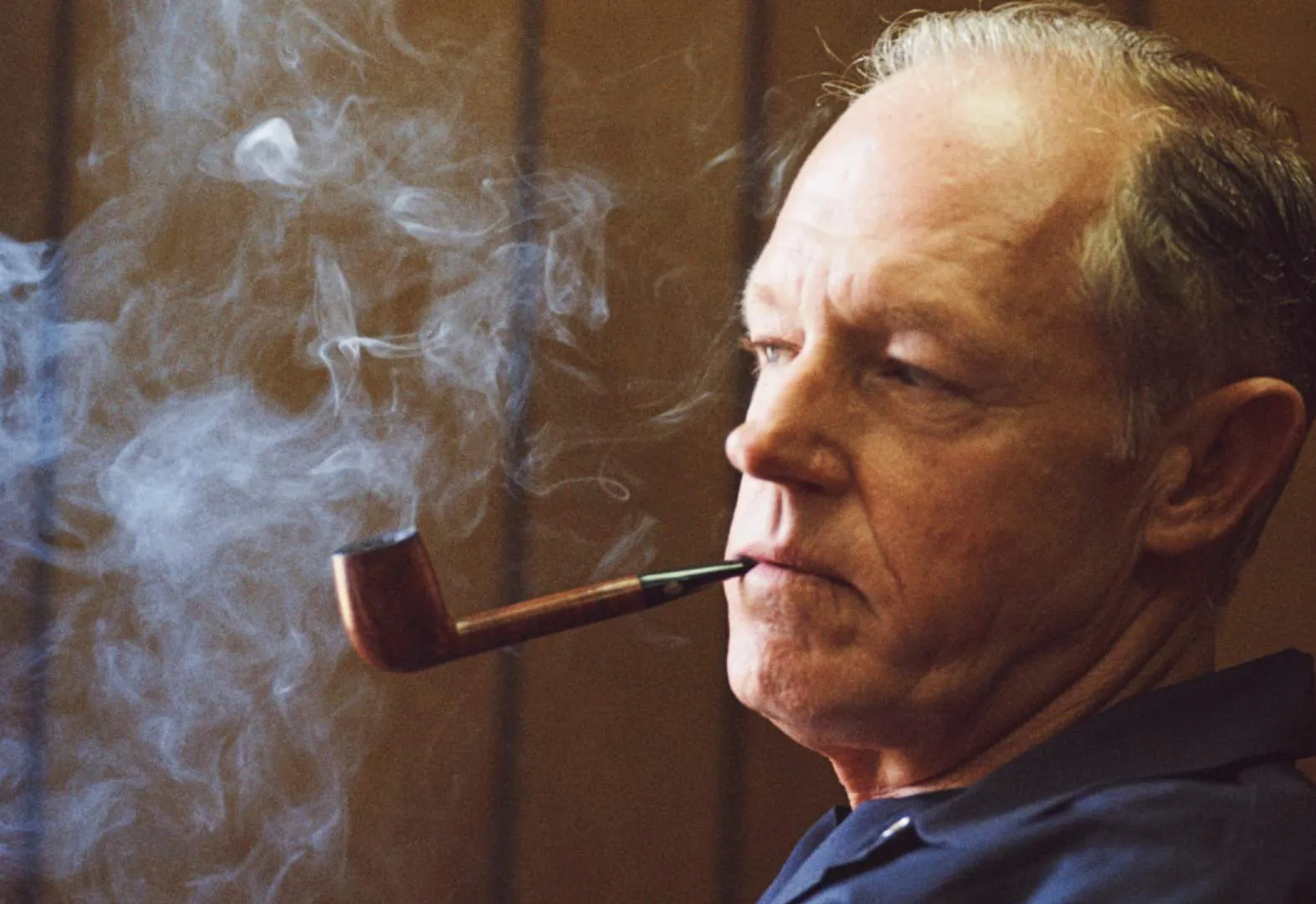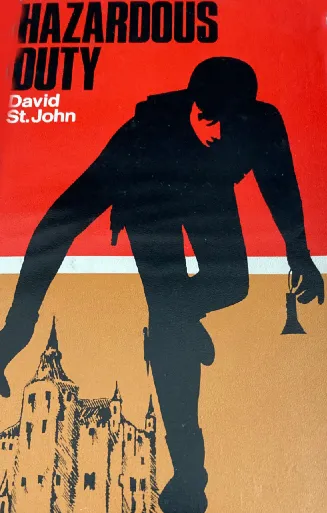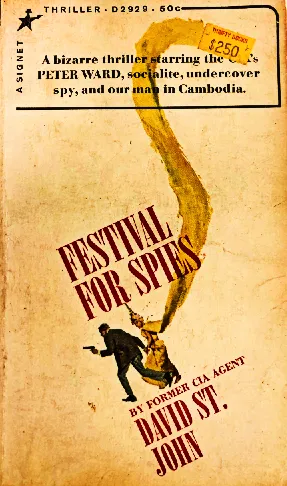From Watergate with Love - Howard Hunt, the CIA Spy Who Wrote Fake 007 Novels
Everette Howard Hunt oversaw the Bay of Pigs operation and the infamous Watergate break-in but his greatest work may have been the bumbling CIA spy's plan to create an American 007 to rival James Bond.
Carrying three heavy attaché cases staffed with electronic equipment, E. Howard Hunt flashed his White House pass at the uniformed guards and charged straight to his third-floor office on June 17, 1972. It was 2:13 am.
Hunt’s five associates had just been arrested for burglarizing the Watergate complex and he knew police were coming for him next. The covert crew was carrying Hunt’s phone number and a key to Watergate Hotel Room 214 - the Command Post where Hunt and ex-FBI agent G. Gordon Liddy had directed the break-in of the Democratic National Committee HQ using walkie-talkies.
“Go home and get yourself an alibi,” Hunt told Liddy. They expected blowback. Hunt needed a lawyer and a shower. But first, he needed to stash the incriminating evidence in his White House office safe and grab $10,000 from the money box…
As spy stories go, the Watergate break-in is a corker. It is also the adrenaline-fuelled opening of Hunt’s memoir, Undercover (1974), a tale of shadowy CIA operations and secretive work as a senior Nixon White House ‘plumber’. Less famously, but no less fascinatingly, Hunt’s memoir also hints at his role in a CIA propaganda operation to create America’s James Bond. The plan was to rival Ian Fleming’s blockbuster movies Goldfinger and To Russia with Love but, much like Watergate, Hunt was in over his head.

"The brand new social experience where you activate your gaming skills as you train like a spy."
- TimeOut
Take on thrilling, high-energy espionage challenges across different game zones.

America’s pulpy 007
Fleming's Bond stories were a PR coup for MI6 in the ‘60s, burnishing the British spy agency’s standing as suave intelligence operatives. Meanwhile, the CIA’s reputation was in freefall after the disastrous 1961 Bay of Pigs invasion of Cuba and persistent (and unproven) conspiracy theories linking the CIA to JFK’s 1963 murder.
The CIA brass decided to borrow a page from Fleming’s literary legacy. The plan was for Howard Hunt to create an American James Bond character who would outshine 007 and restore the Agency’s luster. The CIA wanted to spin Hunt’s stories into Hollywood blockbusters and replicate 007’s magic. And why not?
Like Ian Fleming, Hunt cut his teeth in intelligence as a WWII naval officer. In his spare time, Hunt was also a promising writer who’d sold the movie rights to his 1949 novel Bimini Run. Combined with Hunt’s love of fast cars, beautiful women, and shady CIA operations, he seemed like the perfect candidate to create America’s 007... But not so fast Mr. Bond.
Hunt was also gaffe-prone. In one incident, while interviewing a key asset, Hunt was so drunk he sat on a tape recorder concealed under a pillow and smothered the recording.
.webp)
Peter Ward, the spy who failed me
Hunt was also the CIA’s 'covert action chief', the man in charge of domestic propaganda during the Cold War, so it fell to him to replicate Ian Fleming’s success. Hunt’s orders came from the very top - CIA director Richard Helms, the model for Hunt’s fictional boss Avery Thorne who bore an uncanny resemblance to Bond’s spymaster ‘M’.
Hunt adopted 'David St. John' as his not-so-secretive pen name (combining the names of Hunt’s two sons) and set about crafting the character of Ward, Peter Ward, a communist-hunting CIA officer and playboy who enjoyed fine wine, the occasional martini, and expensive sports cars. Perhaps unsurprisingly, Ward also traveled to exotic locations where he battled villains and seduced beautiful women.
Despite the secrecy around the CIA’s 007 propaganda operation, Hunt was soon unmasked as the author - he’d used his home address while registering the copyright for his first Peter Ward novel, according to Jefferson Morley, author of Scorpions' Dance. Shortly afterward, Hunt was officially ‘retired’ to Spain where he churned out CIA propaganda novels in relative privacy while remaining on the payroll as an Agency contractor.
The seven Ward books were a commercial and critical flop, however. “Peter Ward seems pretty dull - and he has no one to talk to,” one studio exec moaned, “A loner without humor and with little or no personal life or personal charm.”
Another dismissed the books as “a bunch of cr*p”.
CIA spycraft
Intriguingly, Hunt revealed snippets of spy tradecraft and hints about covert operations in his David St. John novels.

On Hazardous Duty (1965) begins with a black bag job, a burglary foreshadowing the Watergate break-in with a team of operatives reporting to spymaster Peter Ward who directs the operation from a nearby Command Post. Unlike the Watergate operation, Peter Ward’s team get away with it.
Hunt details the art of stealing secrets through his fictional spy.
“Mentally he saw them opening the door, masking the windows with black plastic and tape, setting the suction mike near the safe dial, and feeding its output into the Base computer as Harry went through dial-rotation procedures,” Hunt wrote. “With the safe open they would Polaroid-photograph the interior to guide them in replacing the contents.”

Hunt also appears to reveal his own inner turmoil in Festival for Spies (1966), describing his character Peter Ward in a pensive mood:
“Sitting on the edge of a bed, he sipped a Canadian Club nightcap, gazed around the empty room, and felt old, tired, and disillusioned… Lifting his glass, he drank and reflected that he did not want to become simply an odd-job man for Avery Thorne.”
E. Howard Hunt, a spy’s spy
Hunt carried on writing spy novels long after the Watergate scandal but the Peter Ward books are among his most popular series as they were written while Hunt was still working at the CIA and later in Richard Nixon’s White House. In many ways, Peter Ward was the alter-ego of Watergate burglar E. Howard Hunt.

E. Howard Hunt, the spy who knew 'too damn much'
Both Hunt and Ward were Ivy League graduates who lived for the action. While stationed in China, Hunt boasted about dynamiting convoys and bridges. In 1954, he helped overthrow the left-leaning president of Guatemala. Hunt was also reportedly acting CIA Chief of Station in Mexico City in 1963 when JFK assassin Lee Harvey Oswald visited Mexico to obtain a travel visa for Moscow.
As Richard Nixon uttered in one of his infamous Oval Office tapes: “This fellow Hunt knows too damn much.”
If he did, Hunt wasn’t sharing that inside information with Watergate investigators. He pleaded guilty to avoid testifying, hoped (in vain) for a presidential pardon, and served 33 months in prison. When asked by reporters in 1973 if there was a wider Watergate conspiracy involving government higher‐ups, Hunt replied, “To my personal knowledge there was none.”
The following year, Richard Nixon’s impeachment was underway.
SPYSCAPE+

Join now to get True Spies episodes early and ad-free every week, plus subscriber-only Debriefs and Q&As to bring you closer to your favorite spies and stories from the show. You’ll also get our exclusive series The Razumov Files and The Great James Bond Car Robbery!


Gadgets & Gifts
Explore a world of secrets together. Navigate through interactive exhibits and missions to discover your spy roles.
Your Spy Skills
We all have valuable spy skills - your mission is to discover yours. See if you have what it takes to be a secret agent, with our authentic spy skills evaluation* developed by a former Head of Training at British Intelligence. It's FREE so share & compare with friends now!
* Find more information about the scientific methods behind the evaluation here.


Stay Connected
Follow us for the latest
TIKTOK
INSTAGRAM
X
FACEBOOK
YOUTUBE